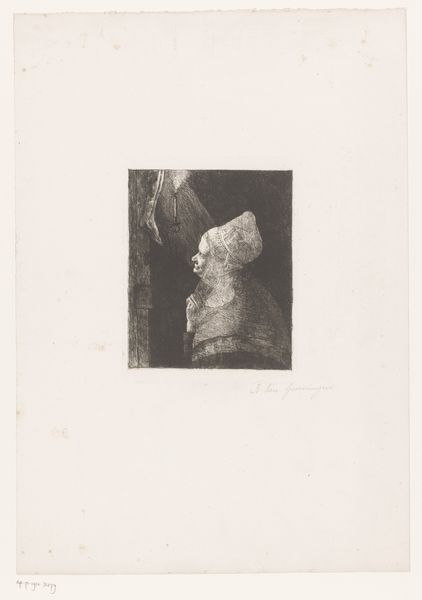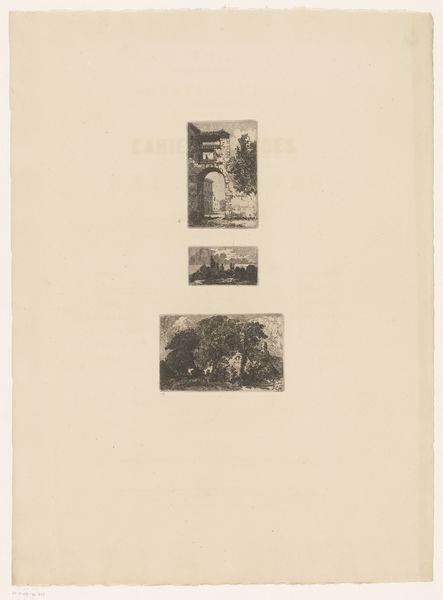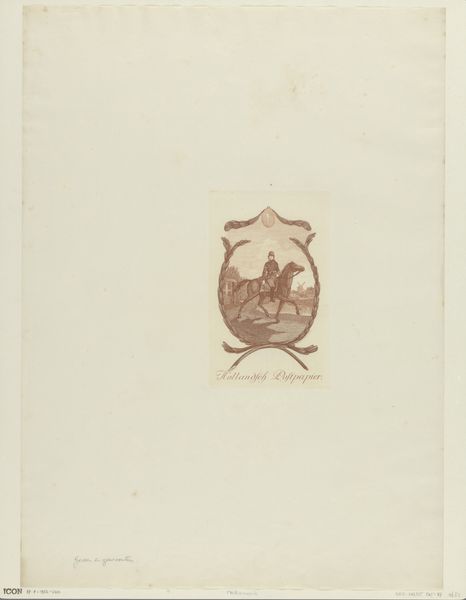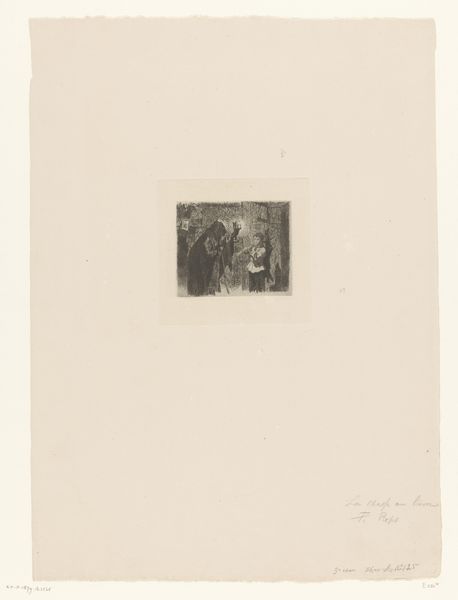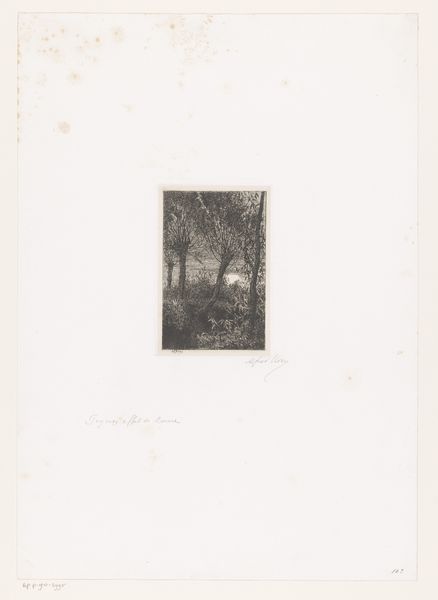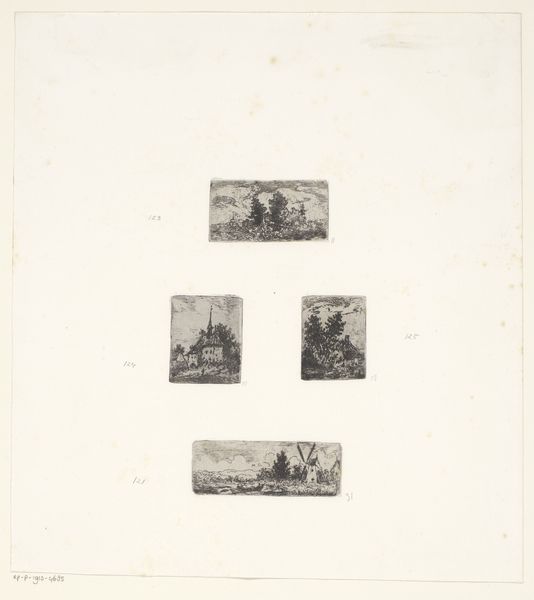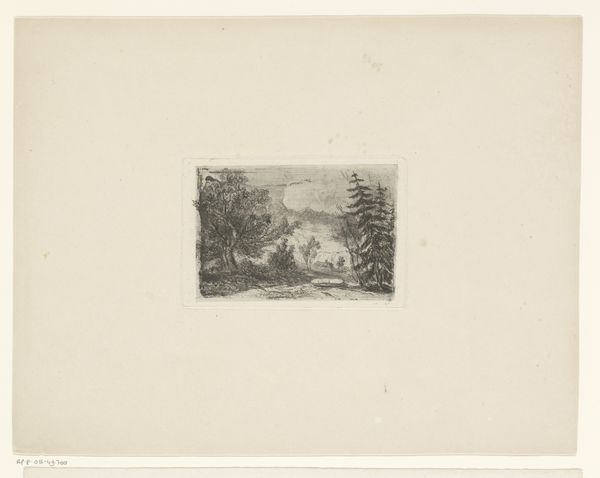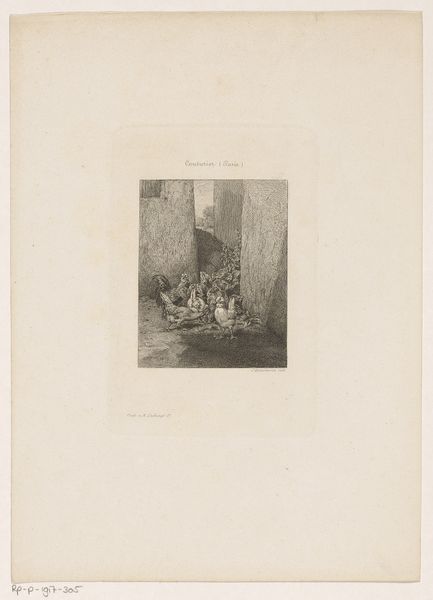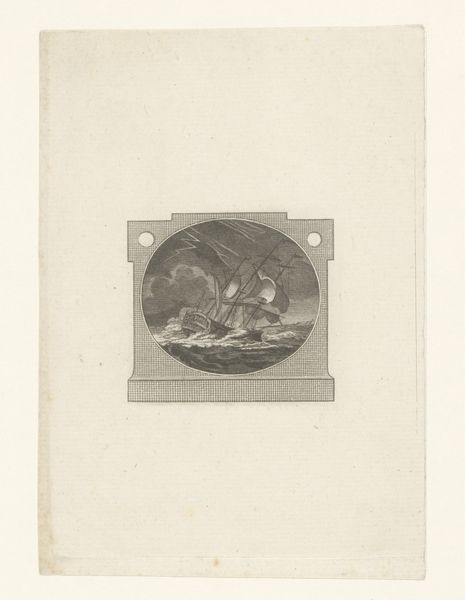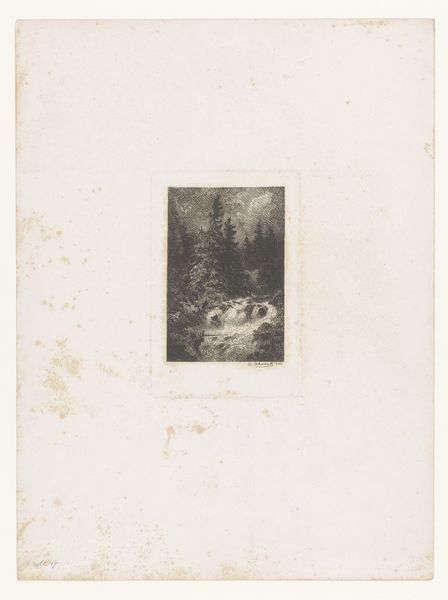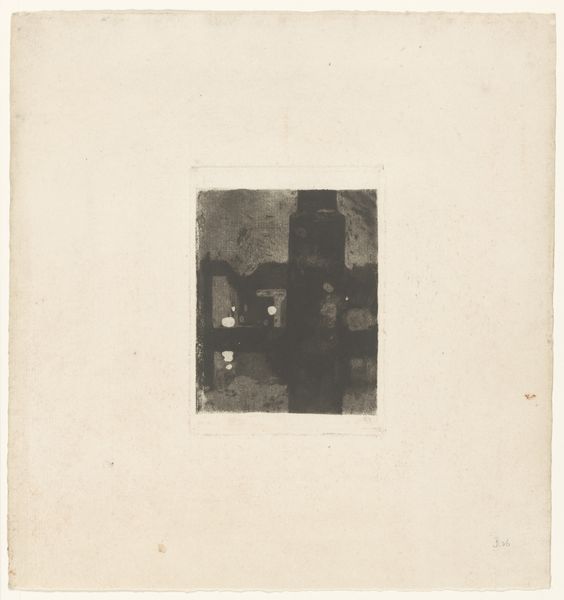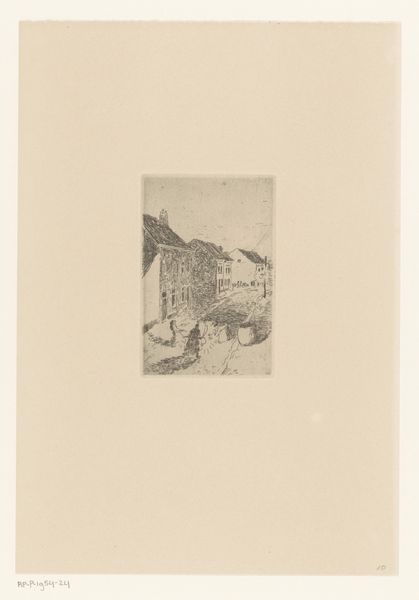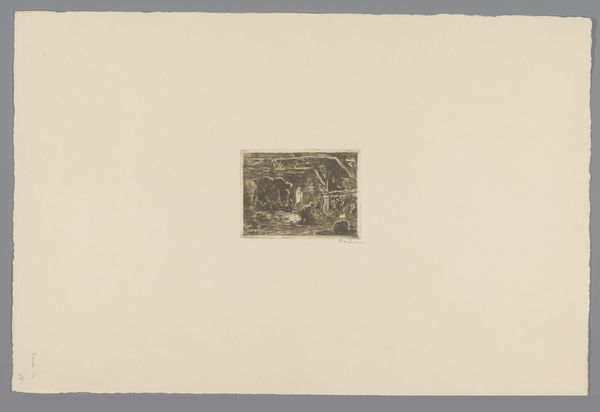
Man wordt uit een kist gehaald te midden van dorpsbewoners 1829 - 1854
0:00
0:00
print, engraving
# print
#
landscape
#
genre-painting
#
engraving
Dimensions: height 240 mm, width 151 mm
Copyright: Rijks Museum: Open Domain
Curator: This print by Willem Frederik Wehmeyer, created sometime between 1829 and 1854, is titled "Man wordt uit een kist gehaald te midden van dorpsbewoners," or "Man being taken from a box among villagers." Editor: The immediate impression is unsettling. There's a huddled group of people in dim light, a sense of claustrophobia emanating from the image. It feels as if they're participating in something secretive, even morbid. Curator: The scene captures a raw, visceral moment. Notice the somber faces, the close proximity to the opened box; what emerges isn’t just a man, but also a return—perhaps unexpectedly, maybe reluctantly—into community. It makes me think of archaic rituals, cycles of death, and even potential rebirth, where communal identity hinges on these profound moments. Editor: Yes, the darkness emphasizes the villagers' reliance on each other during periods of intense transition and societal reckoning. It hints at historical power structures, maybe systems where individuals could become ostracized, essentially placed within the societal margins symbolized here by the 'box' itself. We might see these people, in that moment of drawing out their villager from his coffin, acknowledging broader cultural and social burdens borne from political oppression. Curator: Consider the role of the light itself. It’s not natural. Instead, a small central bulb is creating stark highlights, casting deep shadows, and accentuating certain figures as opposed to the uniformity, offering emotional as well as literal focal points to the scene and possibly implying hierarchical significance. Editor: That constructed illumination also highlights the limited perspectives these people likely had during the early-to-mid 19th century; a light so controlled may represent curtailed narratives—hidden, unacknowledged aspects surrounding identity, perhaps even colonial oppressions if viewed against larger Dutch imperial timelines. We should acknowledge how a singular illumination is always exclusionary too. Curator: Exactly. Art invites that multifaceted discourse. Whether speaking on themes about re-emergence or social stratification during a dark era. Editor: It's why viewing this period through artistic mediums provides essential, difficult conversations connecting histories alongside contemporary sociopolitical struggles; images grant pathways for sustained dialogues reflecting both our past…and our possible futures.
Comments
No comments
Be the first to comment and join the conversation on the ultimate creative platform.
